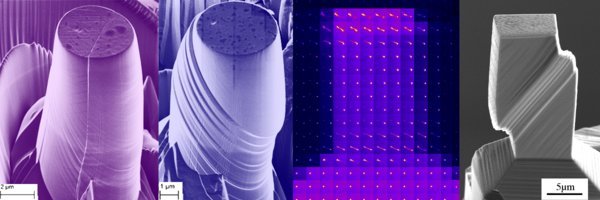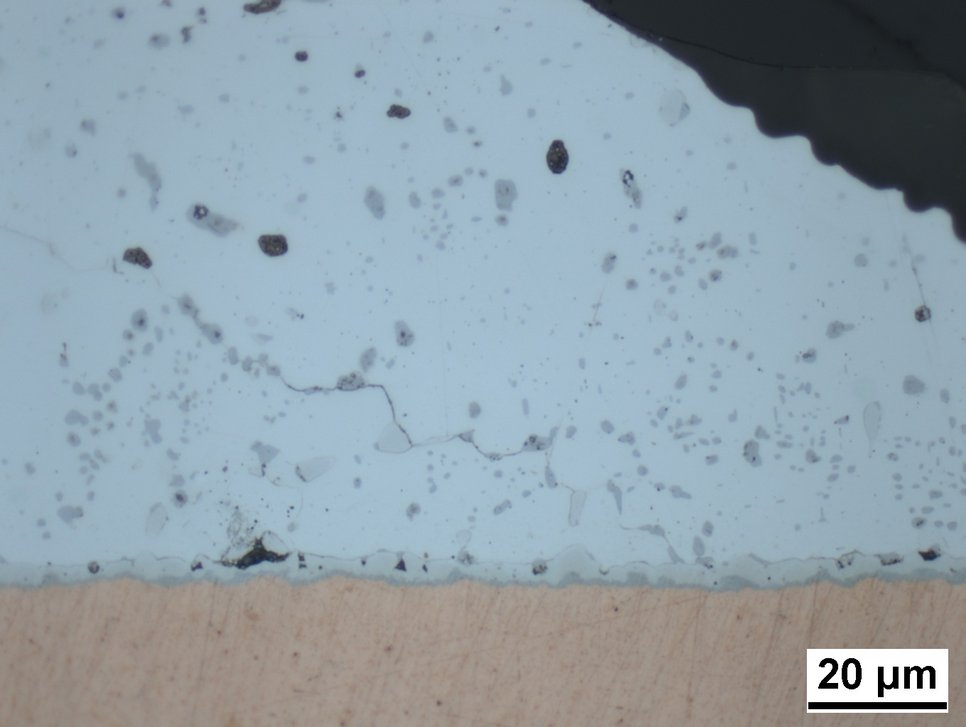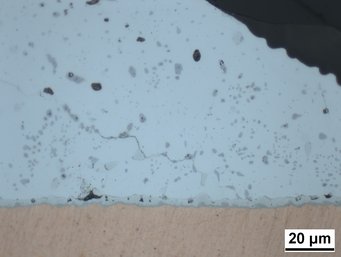
Thermo-mechanical investigation of Sn-based solder joints
Driven by increasing reliability requirements in automotive microelectronics and severe restrictions on lead-containing solders, recent research is focused on the examination of failure mechanisms in lead-free solder joints.
Especially in printed circuit assemblies, the combination of different materials with varying thermal and mechanical properties along with application temperatures between -40 and 150°C result in a superposition of creep and fatigue. The resulting global stresses in the solder are analyzed by a laser assisted wafer curvature method with the aim to study the creep and fatigue behavior.

Microstructure of a tin based solder joint.
Another critical point of interest was the solder microstructure, consisting of different interfaces between multiple phases and intermetallic compounds which determine deformation behavior and crack initiation. Consequently, thorough characterizations of the solder joints habe been performed to assess the microstructural evolution during thermal cycling. Finally, these results provided deeper insight into damage mechanisms and interface reactions leading to failure. Understanding those processes will help to predict or even increase the lifetime of microelectronic systems.
This study was performed in collaboration with U Leoben, U Vienna, MCL, and industrial partners.
